It is easy to grow the Gourds provided some attention is paid to all stages of production. These plants have a general growth pattern similar to Pumpkin, Squash, and Melon and should be treated the same way. You should do plantings as soon as the soil warms in early spring. Gourds perform best when grown on trellises used for grapes and will continue to produce fruit until killed by frost in the fall.
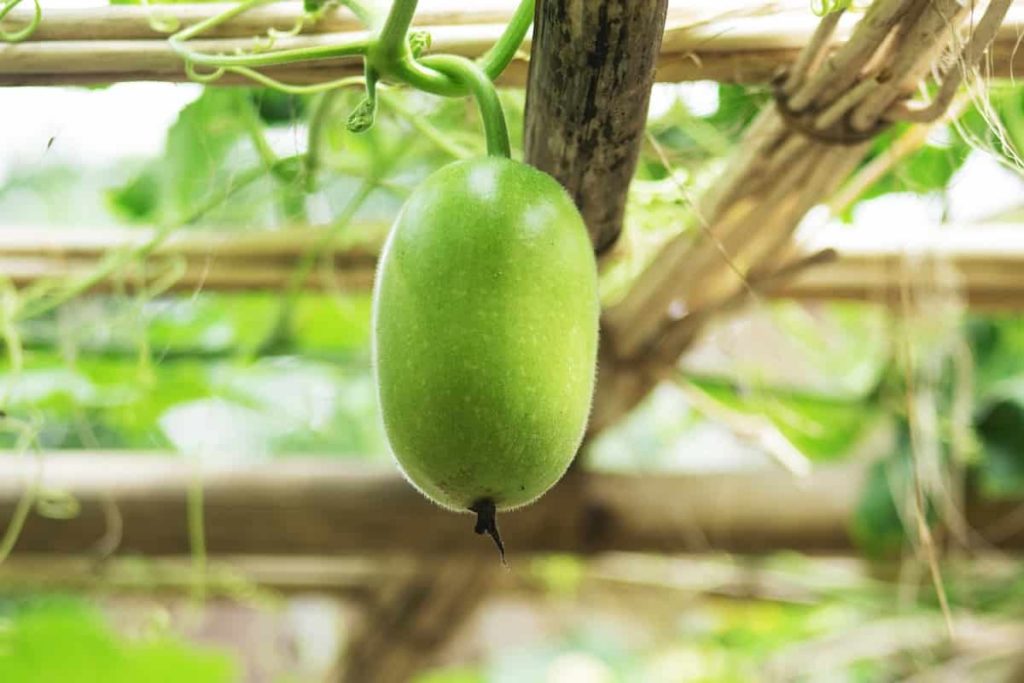
You should work the soil to a depth of eight to sixteen inches, in which rotten manure, compost, and lime should be mixed at full depth. Gourds of all kinds are a fun addition to the garden, and you don’t have to be a master gardener to grow them. Although Gourd vines require a reasonable distance for air circulation, growing Gourds are relatively easy. Although many people avoid growing Gourd plants because they think they are picky growers, these cucurbits are as easy to grow as Radishes, Tomatoes, or other vegetables.
How to grow Gourds from seed to harvest
How long does it take to grow a Gourd from seed?
- Gourds take a total of about 180 days from planting to producing ripe fruits as a result of their extra-long germination process.
- Growing ornamental Gourd and sowing seeds directly in the garden is very easy. Gourds prefer full sun, and rich, well-drained soils contain organic material. Sow seeds outdoors after all the risks of frost are passed, and the weather is hot.
- Gourds need a long growing season in a hot sunny climate. Ornamentals require around 100 days from sprouting to maturity.
- Gourds are slow to germinate, lasting from one to six weeks. The average number of seeds germinating is about 60 to 80 percent. You can plant seeds directly in the ground, or they can be started in small pots and transplanted to the ground after any risk of frost and when the plant has four leaves.
Can you grow Gourds from seeds?
- Gourd and pumpkin used for fall decoration contain seeds that can be collected and planted in your garden next summer. Seed savings can save you a bit of money, but the real benefit of seed saving is the preservation of unique plants.
- Sowing seeds directly into the ground is the easiest option to grow Gourds. To sow them outdoors, it is necessary to wait until after the last average frost date in your area. You should plant when the weather starts to warm up.
- Take the seeds and place them in a pot of water. Let the seeds sit for 15 minutes. If the seeds are submerged, they are still viable. Throw them away if they float because they probably won’t sprout.
When should I start Gourds from seed?
- Gourds can be easily grown by planting seeds directly in the garden. Or, you can start seed indoors 4 to 6 weeks before the last frost in areas with shorter seasons.
- The best time to start your Gourd seed indoors or greenhouse is a few weeks before the last frost of the year. It takes about a week to grow and then about two to three weeks to mature enough that it can be transplanted outside.
- You should plant Gourds in the spring as soon as there is no risk of frost. They are slowly growing and can take 75 to 110 days to reach maturity. Also, if you leave them on the vine to dry, you can’t harvest them for 180 days after planting them.
How many Gourds will one plant produce?
- You can get 2 or 3 different size Gourds per plant, but if you want super long fruits, allow only one per plant.
- Usually, a plant can grow 3 to 4 Gourds, but if you plant more than one Gourd in a container, it can be less productive. Therefore, for best results, you can put a Gourd in a container. If planted in the ground, you should provide a wide space so that it can develop and produce a lot of fruits.
In case you missed it: Homemade Fertilizers For Gourds – How To Prepare
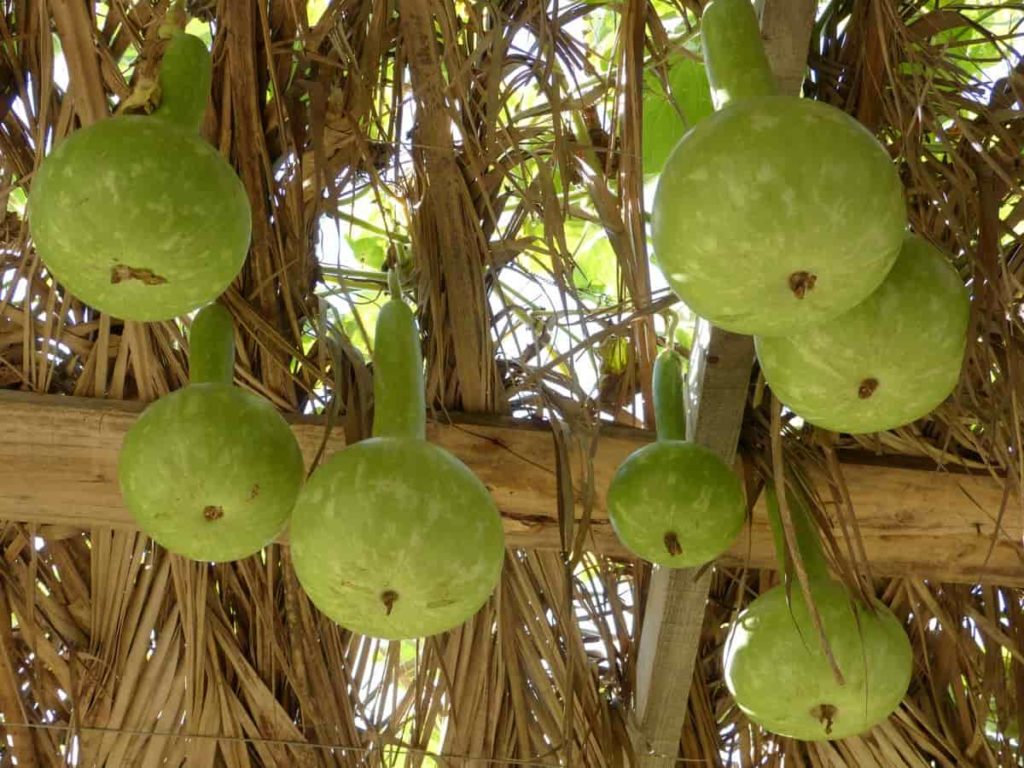
Do you soak Gourd seeds before planting?
- Gourd seeds have hard seed coats. Soak the Gourd seeds in water overnight or for 24 hours to germinate quickly. The Gourd seeds can also be nicked to their edge with a file or other device.
- Prepare Gourd seeds by soaking them in water overnight or longer. Seeds can be cut at the edges along the point. Both of these methods accelerate the germination time. Gourds are slow to germinate, lasting from one to six weeks.
What’s the best way to plant Gourd seeds?
- Seeds should be sown in groups of four seeds at a depth of one to two inches, placed in rows at a distance of eight feet in mounds at least five feet apart. After the true leaves have emerged, you should thin the seedlings to two or three per hill. An upper tip when sowing these seeds is to plant them downwards along the edge.
What can you not plant near Gourds?
- First, you’ll avoid large rooted crops like Potatoes, Beets, and Onions. Overcrowding can result in tangled vines and induce fungal disease.
- Gourds are heavy feeders to absorb nutrients from the ground, having a companion plant to fill these nutrients helps to avoid deficiencies. You should not plant plants like Zucchini near the Gourd to prevent competition for nutrients.
Can I start Gourds indoors?
- Gourds can also be started indoors. When starting Gourd indoors, sow seeds in peat pots about 3 to 4 weeks before their intended outdoor plantation date. You should plant Gourd seedlings outdoors after the frost is past. Harden or acclimate the seedlings outside for a few days before planting.
- To grow Gourds, you can start your seeds indoors in a seed tray 6 to 8 weeks before the last expected frost. Then, water the seedlings daily until the last frost of winter, and transplant them into the ground outside to fit a few feet between them.
- If you plan to grow Gourd seeds indoors in peat pots, follow the packet instructions for seed depth and place them in a warm area to encourage germination. Gourds prefer to grow in well-drained, rich soil, and adding organic matter to the dirt provides plants with extra nutrients if your soil is lacking.
Do Gourds need a lot of water?
- Gourds require plenty of water to grow, and this is especially true during dry and hot periods. Young Gourd plants need more water than established Gourd plants. Light watering is best to help the roots grow and establish themselves initially. You should give an inch of water each week to your plants. The bottle Gourd plant needs enough water for growth. It requires plenty of moisture at all times.
- Give your plants an inch of water each week. Water based on your plant rather than leaves that can cause fungal diseases, such as powdery mildew, is developing.
In case you missed it: How to Grow Carrot from Seed to Harvest: Check How this Guide Helps Beginners
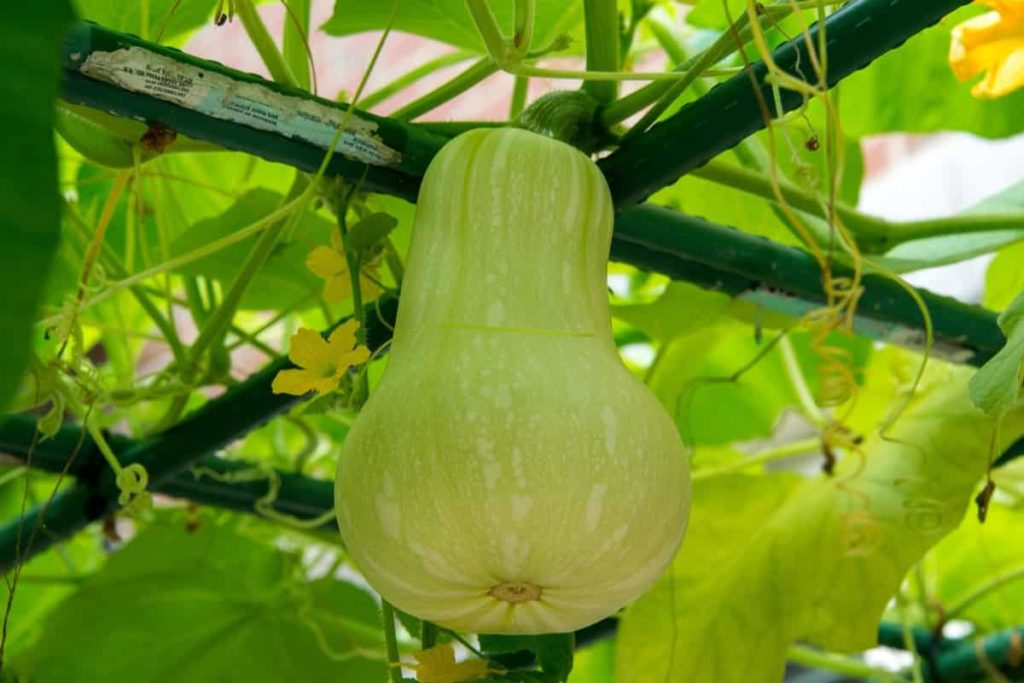
What should I plant next to Gourds?
- Good companions for Gourd are Radishes, Catnip, Broccoli, Dill, and French Marigolds.
- Radishes are the best companion plants because they perform many essential functions when planted in your garden. Radishes have a root system that grows rapidly to help other plant roots break down to form deeper in the soil.
Do Gourds need fertilizer?
- Gourds are fertilized like Cucumbers and Melons. Add 5-10-10 or similar fertilizer (6-12-12) to the soil at the time of planting, at the rate of 1.8 kg per 100 feet row. When the plant vines are 12 to 18 inches long, spread the fertilizer again at least 18 inches away from the stems. Make a third application after you’ve got your first Gourds set on the vine.
- If you place Gourd seedlings in good rich soil (or soil modified with compost or worm castings), they should not require any additional fertilizer throughout the season.
- If you have added compost and manure to this soil at the time of seed sowing, there is no need for additional fertilizer. You can feed with more liquid fertilizer in potassium. Do not give too much nitrogen fertilizer; it will only encourage leafy growth.
Do Gourds need a trellis?
- You don’t need a trellis to grow your Gourds because they’ll grow fine on the ground. However, the Gourds growing on the ground will have a flat side where they lie, while the Gourds growing on the trellis will retain their round shapes.
- Gourds need strong, sturdy vertical structures to support their weight, especially growing large Gourd varieties. Arbors, arches, and pergolas are perfect for growing Gourds vertically, and they look attractive with Gourds hanging down.
- Gourds are also grown on the ground, where their long vines will spread in all directions. Growing them vertically controls their growth, uses less valuable garden space, and keeps the fruits clean. As the plants grow, you can wrap the tendril around the trellis or wire and train them to move upwards.
Can Gourds be grown in shade?
- Hard-shelled ornamental Gourds prefer full sun. They can tolerate the heat. They grow in partial shade; however, the greatest growth is achieved when grown in full sunshine.
- Gourds require full sun, or at least 6 hours a day. You should prepare fertile soil before planting. Most of the Gourds are native to tropical or warm temperate climates. They need a long growing season to mature, and they are killed by frost. Most varieties are fast-moving prostrate or climbing vines with a spiral-coiled tendril.
- Gourds prefers full sun and well-drained soils rich in organic material. Sow seeds outside after all the risk of frost are over and the weather is hot. You should sow seeds 1 to 2 inches deep in groups of 4 seeds, 5 feet in rows, and the interval in groups is 8 feet apart.
In case you missed it: How to Start Home Gardening in New Hampshire (NH) for Beginners: From Scratch for Indoors, Outdoors, Backyards, Raised Beds, and Containers
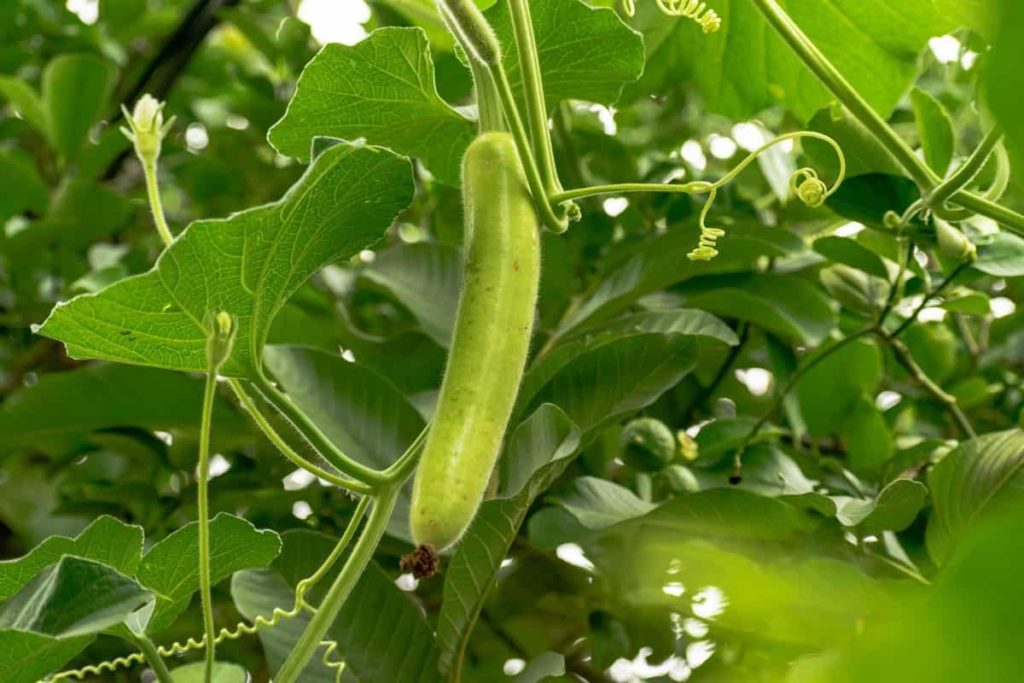
How do you grow big Gourds?
- You should work a 2-inch layer of compost into the soil of full sun, well-drained bed. Place Gourd seedlings in the bed, keeping them at a distance of 8 feet. Plant the entire peat pot on the ground along the rim just below the ground’s surface. The pot decomposes naturally and reduces the disruption of the roots in transplantation.
- High levels of phosphorus encourage better fruiting in Gourds. Add 45 grams of phosphorus per 100 square feet of soil before planting. It can be increased individually using organic fertilizers such as bone meal or rock phosphate.
How do you know when Gourds are ready to pick?
- The Gourds are ready for harvest when the stems dry and turn brown on the vine. Cut the Gourd from the stem before the freezing temperature hits, as the cold can ruin their skin. Even a slight frost can change the color of hard-skinned Gourds and affect their ability to dry. Reject any Gourd that is injured or damaged.
- If a Gourd is ready to harvest or not is by the look and feel. The Gourd vine will begin to die back, and the Gourd skin will be hard and yellow. An immature Gourd feels fleshy and bright green. You should harvest the mature Gourds before the first frost.
- A Gourd’s body may still be green, but the dry stem means that the Gourd is not getting any more nutrients from the vine, is being hardened off, and can be harvested if needed.
How do you stop Gourds from rotting?
Wipe the Gourds dry and spray lightly from the mist with a household disinfectant or rubbing alcohol. In a dark, hot, dry area, place Gourds on a few layers of newspaper with good ventilation. Replace the damp newspaper every few days, turning the Gourds when you do so. Heat accelerates drying, and darkness will preserve the color of the Gourd.
Can you prune Gourd vines?
- Its vines can reach 16 feet or more in length and grow on the ground, along the fences, above the arbors and pergolas, or above the trellis.
- To make the plant produce more Gourds, cut off the end of the primary vine when it is 10 to 15 feet long. Male flowers bloom on primary vines, while female flowers bloom on secondary vines. You can prune the main stems of the vine when they are 8 to 10 feet long, and you can prune the lateral vines, usually at about 6 feet. Ornamental Gourds will grow on lateral vines, and you’ll get an excellent crop by trimming your vines.
In case you missed it: How to Grow Tomatoes from Seeds: Starting from Scratch, A Beginners Guide to Indoors, Outdoors, and in Pots

Can I grow Gourds in pots?
- There are different Cucurbita or Gourd plants, some of which are perfect for container gardening. Gourd plants are versatile and grow fairly well on land or pot, as long as you choose a large enough container and give them some support, like a trellis for their long vines to climb.
- Gourds can be fitted in containers, but realize that you’ll still need a strong trellis to prevent Gourd vines from spreading everywhere. You also need a large container to grow a few plants, usually a half-barrel. Make sure the pot size is at least 24 inches wide and 24 inches deep, but the bigger one is better.
Does frost hurt Gourds?
- Like Pumpkins and Winter Squash, frost will harm the Gourds, and the frost damage will shorten their shelf life. The crop ready for harvest will have hard skins and brown, dry stems. However, they still need soft handling to avoid injury, denting, or skin breaking.
- When you harvest them, it depends on whether the Gourd is fully ripened. Although the ripe fruits will not suffer from frost, it will harm the green fruits, but they tend to rot rather than dry. You should cut the mature Gourds after the stems have dried and browned and before the first frost. Do not harvest too soon; otherwise, the fruit will rot.
How do I get rid of aphids on my Gourds?
- Release lady beetles in the garden or use insecticidal soap or neem oil sprays on infected plants to control aphid infection naturally. Also, controlling ants will help control aphids, as ants act as guardians and even carry aphids to favorite food grounds like your Gourd.
- You can ensure the safety of your Gourds by washing them regularly and placing aluminum foil under your Gourds.
What soil is best for Gourds?
- Gourds prefers full sun and well-drained soils rich in organic material. Sandy loamy soil rich in organic matter with good drainage and a pH of 6.5 to 7.5 is suitable for Gourd cultivation.
- Gourds are hardy vines that can take up much space to allocate according to the variety you plant. Provide enough organic material for Gourd and mulch to retain moisture.
In case you missed it: How to Start Onion Farming from Scratch: A Detailed Guide of Planting to Harvest for Beginners
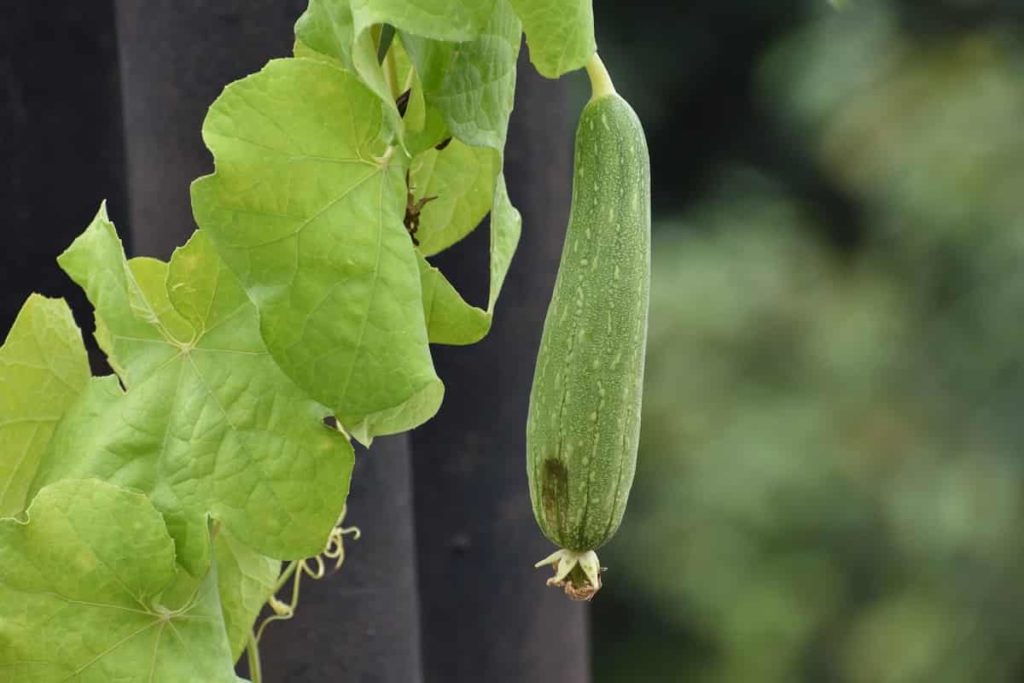
Conclusion
Growing Gourds from seeds are very straightforward, and you get a chance to enjoy a full harvest in a few months after planting, depending on the variety. Some Gourds are edible in some growing stages, but it’s essential to know which ones. Most people grow Gourds for decorative purposes.
Learn how to plant Gourds seeds indoors so that they get a head start and are transplanted or instructed to sow seeds in a garden bed once the risk of frost is over. Discover some of the problems you may face, how to fix them and how to use your Gourds to create an attractive garland. Provide your Gourd with a good amount of sunlight, and your plants thrive and create beautiful Gourds to create a birdhouse or decorate your home.
- Best Liquid Fertilizer for Flowering Plants
- How to Set Up an Efficient Watering System for Home Garden
- How to Mulch Tulip Bulbs: Expert Tips Best Tulip Blooms
- Common Problems with Potted Figs and How to Solve Them
- How to Prevent Flower Drops in Pomegranate Trees: Effective Tips
- How to Boost Ridge Gourd Flowering and Yield: A Beginner’s Guide
- Effective Pollination Techniques for Maximizing Gourds Yield
- Composting Techniques for Manure in Home Gardens
- A Step-by-Step Guide on Propagation Techniques for Jasmine Plants
- How Do I Make My Garden Less Cluttered: A Beginners Guide
- Growing Red Currants at Home for Beginners
- Gardening Techniques in Planting Vegetables
- Where to Place Indoor Plants in Your Home
- How to Grow Tomatoes Organically at Home: A Comprehensive Guide
- Organic Gardening on a Budget: Low-Cost Methods and Materials
- Gongura Seed Germination and Planting Methods
- Cabbage Seed Germination and Selection
- Broccoli Seed Germination and Selection
- Asparagus Seed Germination and Variety Selection
- Seasonal Flower Gardening: Best Practices for Spring, Summer, Fall, and Winter
- How to Grow Hibiscus from Flower
- Plantation Ideas for Home Decoration: A Beginners Guide
- Flower Garden Designs and Layouts for Beginners
- Planting and Spacing Techniques in Papaya: A Beginner’s Guide
- Growing Gold: Essential Techniques for Planting Pineapples
- How to Make Kalanchoe Plant Bushy: Home Remedies and Solutions
- 11 Reasons Why Your Gardenia is Not Blooming: Home Remedies and Solutions
- Eco Elegance: The Guide to Designing a Drought-Tolerant Landscape
- Gardening on a Slope: Strategies for Hillside Landscaping
- Nourish and Flourish: Top Organic Mulches for Thriving House Plants
- Everything You Want to Know about Indian Mogra Flower: Discover Uses and Growing
- Green Thumb Success: Expert Tips for Cultivating Greenhouse Pumpkins All Year Round
- Maximize Growth & Flavor: The Ultimate Guide to Companion Planting in Herb Gardens
- How to Control Rhododendron Problems Naturally: Home Remedies and Organic Ways to Fix Them
- Natural Magic: The Remarkable Benefits of Cinnamon for Plants
- Best Steps to Revive Dying Tulip with Natural and Organic Treatment